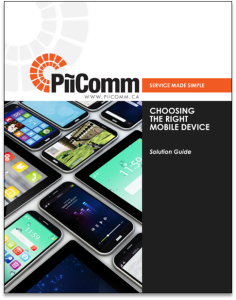
Battery Life Is A Key Enabler of Mobile User Productivity
The are many “lifecycles” to be managed in the mobile enterprise solutions arena including those of: devices, applications and batteries. Here we will shed some light on managing the lifecycle of batteries that power mobile devices.
Importance
Battery performance has a direct impact on overall total cost of ownership of mobile device fleets. Investing sufficient effort upfront in selecting the right mobile device for your application will pay real dividends over the three or five year lifecycle of your mobility infrastructure. Productivity loss costs for rugged tablets account for 35% of their overall total cost of ownership over five years (VDC Research Group, Inc). A well-thought out battery management approach will significantly mitigate productivity loss as a result of battery failure. A typical example of this is proactively testing battery health especially after the first year of deployment,
Charge/Re-charge Cycles
Most new batteries go through a formatting process during which the capacity gradually increases and reaches optimal performance at 100–200 cycles. After this mid-life point, the capacity gradually begins decreasing. The extent of discharge, operating temperatures and charging method all govern the speed of capacity loss. The deeper the batteries are discharged and the warmer the ambient temperature is, the shorter the service life. The effect of temperature on the battery can be compared with a jug of milk, which stays fresh longer when refrigerated.
Most portable batteries deliver between 300 and 500 full discharge/charge cycles. Fleet batteries in portable devices normally work well during the first year. However, the confidence in the portable equipment can begin to fade after the second and third year, when some batteries begin to lose capacity.
Power Requirements
A fully-charged battery ‘should’ be capable of powering your mobile enterprise solution, under full load, for a full shift. This ensures smooth operations during working hours, prevents any productivity loss and allows time for overnight charging.
Many factors affect power consumption:
- mobile device
- screen brightness
- active radios (GPS/WiFi/cellular)
- features such as scanners, etc., application software, temperature, etc.
Learn more on how to select a mobile device: click here

